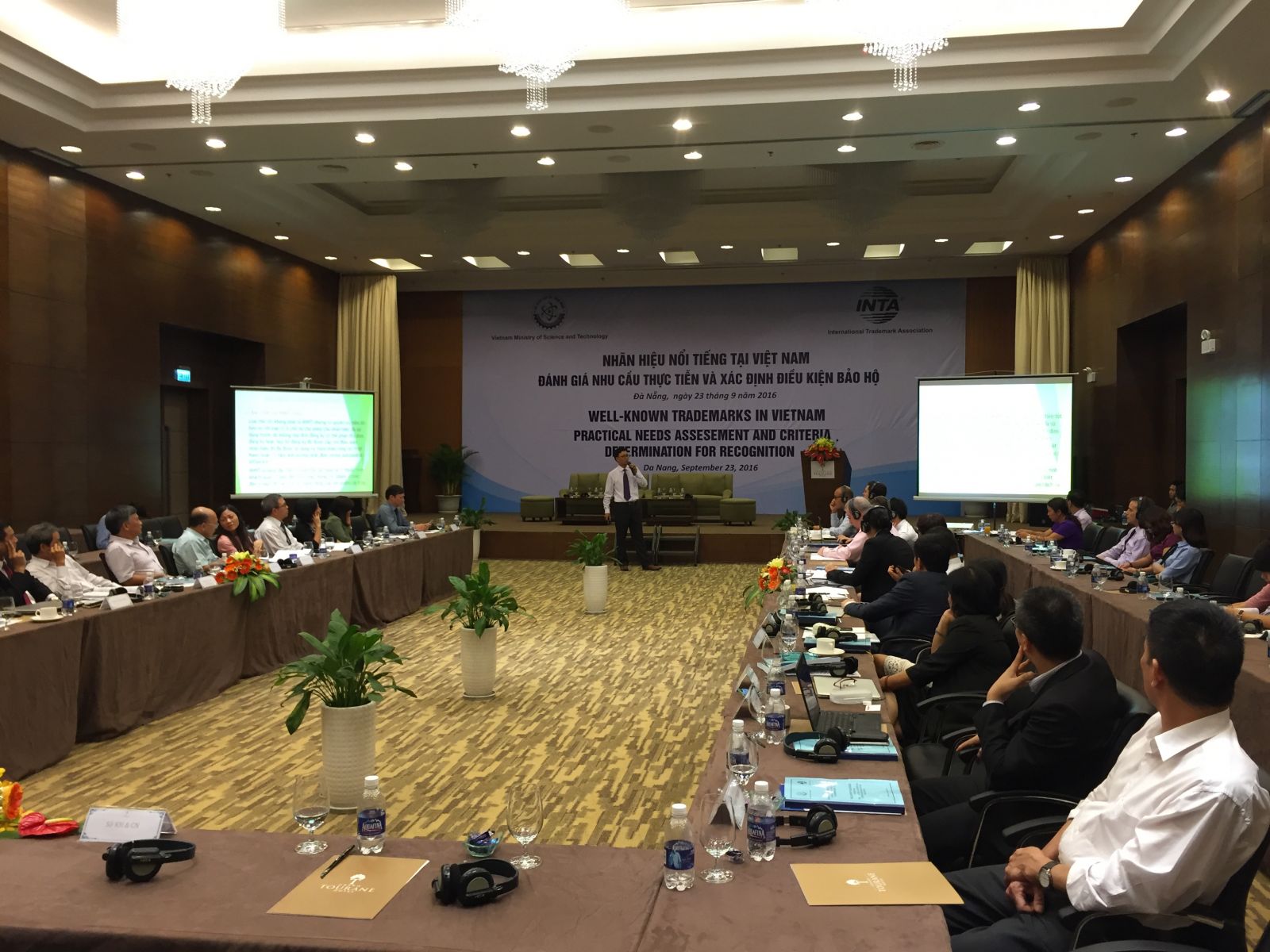Senior Partner, Registered IP Attorney, Mr. Le Quang Vinh, one of two appointed researchers, presenting the Framework Proposal for Well-known Mark Protection within the Well-known Mark Protection Project jointly held and organized by Ministry of Science and Technology (MOST) and International Trademark Association (INTA) took place in Da Nang city, September 23, 2016.
Informed Counsel
September 28, 2016
vinh@bross.vn
Within the cooperation project framework between Ministry of Science and Technology (MOST) and International Trademark Association (INTA) with respect to well-known mark protection in Vietnam, the 3rd conference, as one of various activities planned to commence since late 2015 and to end early 2017, was successfully held on September 23, 2016 at the Grand Tourane Hotel in the third largest city of Vietnam, coastal city of Da Nang.
 Taking part in the conference had the participation of the IPR enforcement bodies including the representatives coming from MOST and MOST’s Inspectorate, National Office of Intellectual Property (NOIP), Economic Police (C46), Anti-smuggling Department under the General Customs, Da Nang city‘s people’s court, Market Management Bureau. More especially, the conference warmly welcomed the presence of Mr. Ronald van Tuijl, President of 2016 INTA, who come to Vietnam first time. In addition, the success of the conference was also contributed by the presentation made by foreign experts and attorneys coming from EuroCham, Japan, USPTO, as well as by the voice of owners of reputable brands such as NIKE, IKEA, BMW, Vinamilk, Vinacafe, etc.
Taking part in the conference had the participation of the IPR enforcement bodies including the representatives coming from MOST and MOST’s Inspectorate, National Office of Intellectual Property (NOIP), Economic Police (C46), Anti-smuggling Department under the General Customs, Da Nang city‘s people’s court, Market Management Bureau. More especially, the conference warmly welcomed the presence of Mr. Ronald van Tuijl, President of 2016 INTA, who come to Vietnam first time. In addition, the success of the conference was also contributed by the presentation made by foreign experts and attorneys coming from EuroCham, Japan, USPTO, as well as by the voice of owners of reputable brands such as NIKE, IKEA, BMW, Vinamilk, Vinacafe, etc.
The conference went into the insight of well-known mark protection legal regimes which have both caused headache to not only developing countries but also developed ones as well as and been observed to be non-unitary worldwide regardless of the existence of Section 16(2) & (3) the Trade-related Aspects of Intellectual Property Right (TRIPs) and WIPO Joint Recommendation 1999 guiding the decompression of Paris Convention members’ obligation bound by Article 6bis Paris Convention
One of the key points with novelty mentioned in the conference was that one of the appointed researchers pulled out the rationale and nature for well-known or famous mark, particularly, he stated that well-known mark is not a kind of mark as confused by many people for a long time; instead it is just a status or state which is better widely known by relevant segment of public than the lower kind of mark (a) widely used and recognized mark under Article 74.2.g of IP Law 2005 of Vietnam or mark with substantial influence under Section 32 of Chinese Trademark Law of 2013, and the lowest kind of mark (b) common or ordinary mark.
In other words, only where three attributes (i) distinguishable and known by public (function of indicating origin of commerce), (ii) high degree and extent of knowledge, and (iii) reputation or fame pertaining to its goods/services, which must be concurrently found in any mark subject to a request for well-known recognition, are sufficient to determine whether a mark is well known or not. It can be ascertained that the presence of attribute (iii), that is always moving different from the statical attributes stably subsisted on the other two types of mark (a) and (b), is the main reason leading to the fact that it is almost impossible to define what well known mark is. And that is also the reason why no definition of famous or well-known mark available in Article 6bis Paris Convention, TRIPs and WIPO Joint Recommendation 1999 as well as in almost countries’ trademark laws in the world. Attention is drawn that the presence of moving character makes a mark may become well-known in this market but may be not sufficient to be well known in other market.




